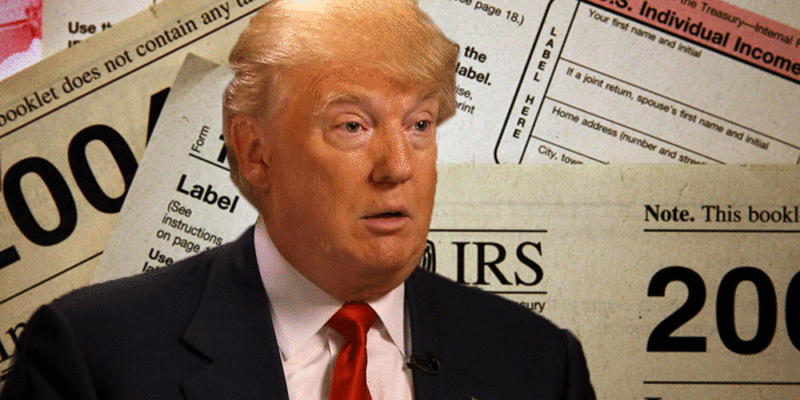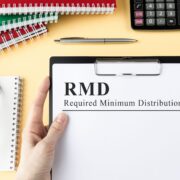A New York Times story based on Donald Trump’s long-sought-after tax information shows he avoided paying earnings taxes for the majority of the previous 20 years and paid just $750 the year he was chosen, president.
That does not indicate he isn’t a billionaire.
By combining moneymaking organizations with incredible money losers, the Trump Company has been able to shield revenues created by workplace homes and “The Apprentice” from tax collectors. It’s a souped-up version of the formula released by America’s landlord class for decades. However tax losses are different from running losses, and the brand-new information does not necessarily show his business empire is heading into a crisis, even if it brings large debts.
“Your tax return at the end of the day reveals income and whatever reductions are declared against that income. That’s it,” said Thorne Perkin, president at Papamarkou Wellner Property Management. “It doesn’t always reveal net worth.”
The newspaper’s report explained the degree of Trump’s tax-cutting strategies, such as taking reductions for seeking advice from charges to his child and for hairstyling, which led to his paying far less than poorer Americans.
Although the report raises concerns about the legality of some of the maneuvers, the new details don’t affect the Bloomberg Billionaires Index price quote of his wealth. His net worth is based mainly on the value of his workplace and business residential or commercial property holdings, minus debts that were currently understood. The index estimated his net worth at $2.7 billion as of August, down $ 300 million from mid-2019, harmed by decreasing costs for specific kinds of real estate holdings.
Trump’s office properties include industrial spaces at Trump Tower, a leasehold on 40 Wall Street in downtown Manhattan and a 30% interest in two workplace towers co-owned with Vornado Real estate Trust. Jointly, the possessions are valued at about $1.9 billion, and Trump’s share of the debt that overloads them is about $670 million– implying they make up almost half of his net worth.
Financial records for his golf courses in Europe have long shown that, after consisting of items such as devaluation, they run in the red. The tax information gotten by the Times expose Trump’s American golf courses run similarly.
Depreciation is crucial for genuine estate financiers. Depending on the kind of property at hand, they can compose off a part of its worth over a useful lifetime predetermined by the Internal Profits Service. That permits financiers to claim tax losses on the residential or commercial property even when they’re putting cash in their pockets.
“You desire to reveal as many losses as you potentially can for your reductions,” stated Papamarkou’s Perkin. “That’s a huge part of the advantages of realty investing.”
Tim Murtaugh, a representative for Trump’s reelection project, said in an interview on Fox News on Monday that the Times story is “not accurate” without specifying which parts.
“I paid many millions of dollars in taxes however was entitled, like everyone else, to depreciation & & tax credits,” Trump wrote on Twitter.
In a Monday story, the Times also exposed that when he did pay taxes it was due to the fact that of money from his function fronting “The Apprentice” and not as a realty designer. Trump earned $197 million from the show and $230 million from branding, speaking engagements, and licensing deals off the back of the fame the series offered. In addition to obtaining versus Trump Tower and selling stocks and bonds, he plowed a few of that cash into the money-losing golf courses.

CARRYING LOANS
The tax files explained by the Times aren’t enough to reason about the profitability of Trump’s empire. But even if his golf courses are bleeding cash, they contribute comparatively little to the tally of his fortune– about $430 million prior to debt. Rates for golf resorts are down after years of decreasing interest in the sport. Younger generations just aren’t making it up as quickly as their senior citizens are leaving it behind.
Trump has long been needed to divulge a roadway map to his properties and liabilities. In 2015, then a contender for the Republican party’s election for president, he launched a monetary disclosure listing the lending institutions behind his loans, ranges for their exceptional balances, when they were released, and when they must be repaid.
That a number of are due in the next few years isn’t uncommon in commercial real estate, where most loans run five to 10 years and are refinanced routinely. Unless there is a severe deterioration in the efficiency of his properties, it’s likely his portfolio can be refinanced before loans grow.
Though Trump has brought on this balancing act for years, his reelection could make getting brand-new loans harder if potential lending institutions do not wish to deal with the possibility of foreclosing on a sitting U.S. president. Alternatively, Trump participates in a variety of court battles that could accelerate as soon as he leaves office and make complex refinancing. The COVID-19 pandemic also may take a long-lasting toll on the worth of his holdings, making future loans more difficult.
His most significant financial vulnerabilities remain his hotel in Washington, where the pandemic has slowed service, and Doral, a vast golf resort in Florida. He has gotten almost $300 countless personally guaranteed loans from Deutsche Bank versus these properties. The financial obligations grow in 2023 and 2024, according to his individual financial disclosure.
ROOM TO BORROW
But Trump, whose earlier career included a series of bankruptcies, also has a safety valve: the workplace homes.
When he refinanced Trump Tower in 2012 with a $100 million loan, it was assessed at $480 million. A 2015 refinancing of 40 Wall Street fetched a $160 million loan on a $540 million appraisal.
That left both residential or commercial properties with relatively low leverage for Manhattan realty, suggesting either a freshly found out financial conservatism on Trump’s part or a squeamishness on the part of the lender, Ladder Capital. Ladder, which focuses on loans for industrial home, is Trump’s second-biggest lender after Deutsche Bank.
An August appraisal of the buildings by the Bloomberg Billionaires Index, based on current earnings and dominating capitalization rates, was less sanguine, valuing them at $365 million and $375 million respectively. However so long as the pandemic doesn’t crater office worths, the homes might carry even more debt, were Trump to require it.





















Comments